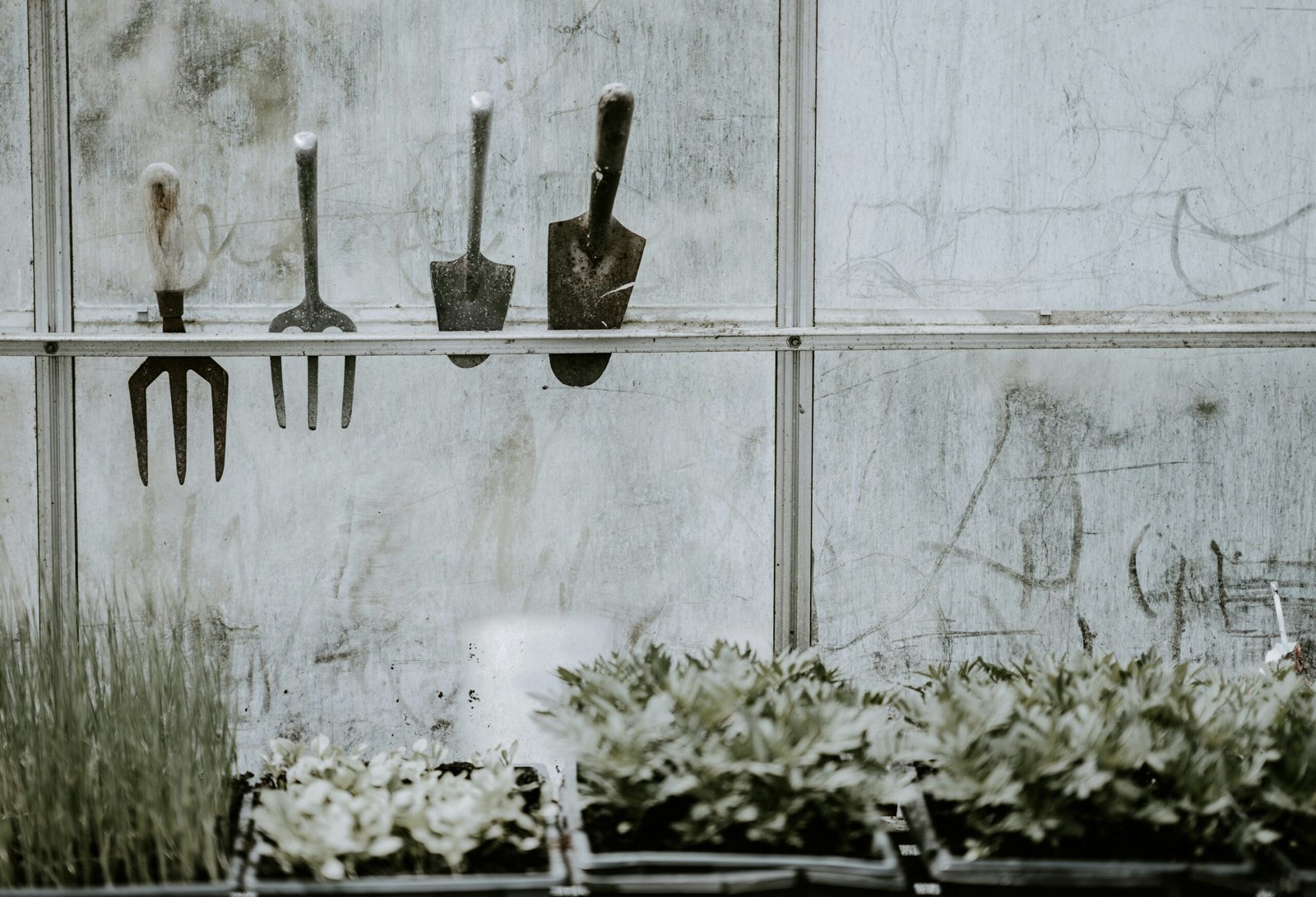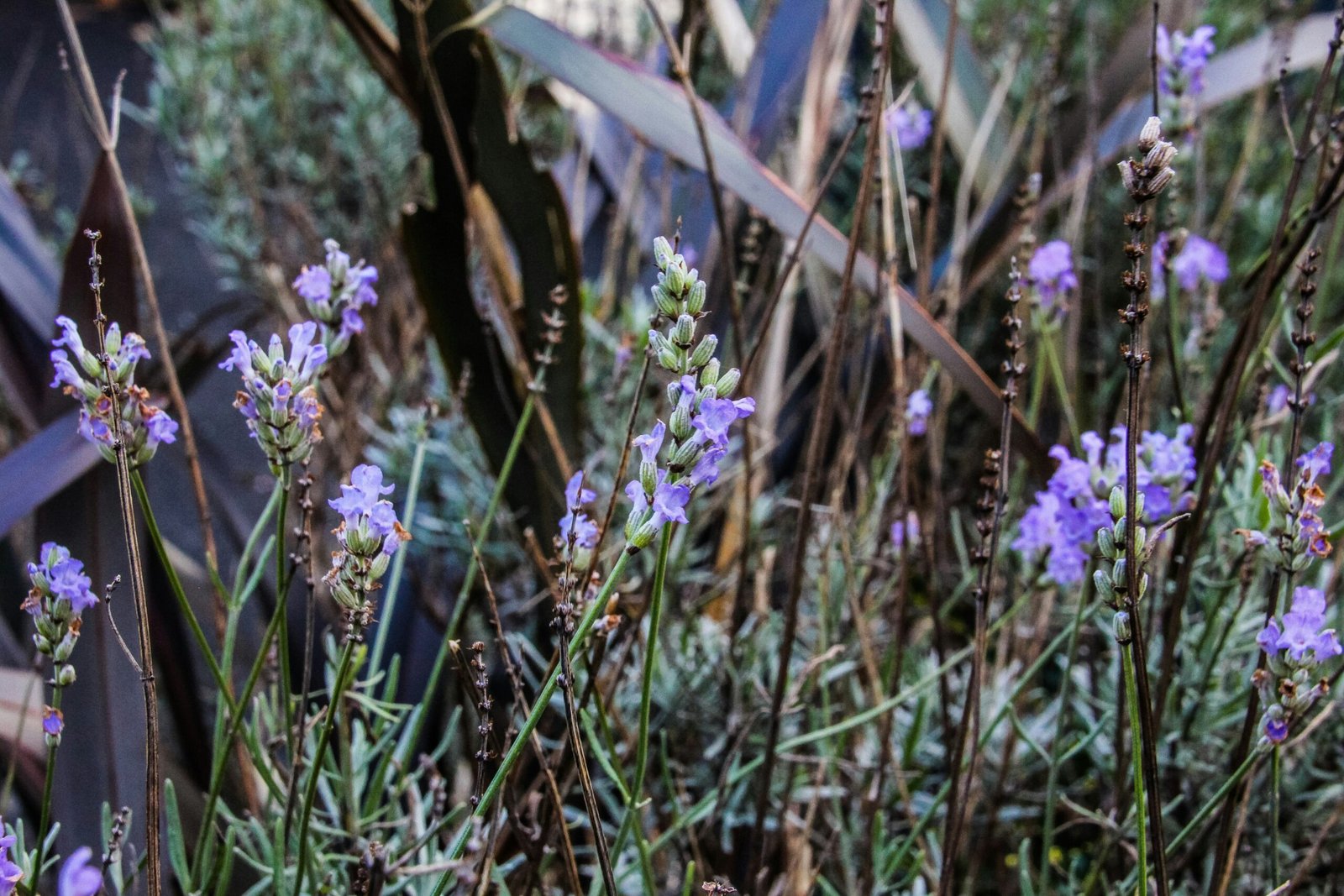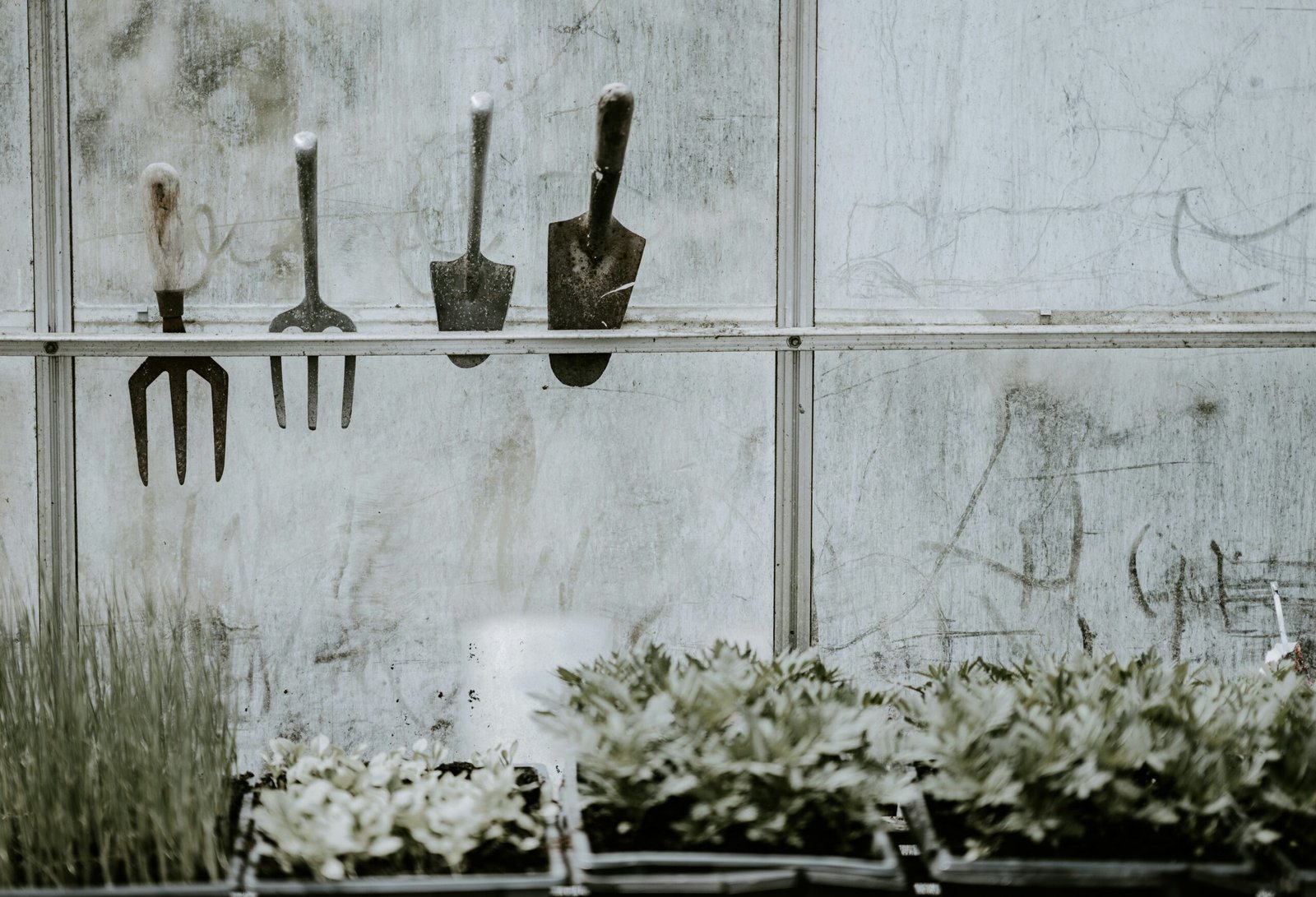Essential Garden Tools for Beginners: A Comprehensive Guide

“`html
Introduction to Gardening Tools
Embarking on a gardening journey can be both an exciting and daunting experience, particularly for beginners. One of the critical aspects that can determine the success and enjoyment of your gardening endeavors is having the right tools at hand. Proper gardening tools are indispensable as they facilitate efficient and effective execution of various gardening tasks, enabling even novice gardeners to achieve professional results.
Gardening tools are designed to simplify and streamline the myriad of activities involved in managing a garden. Whether it’s preparing the soil, planting, weeding, pruning, or harvesting, having the correct tools can significantly enhance productivity and reduce physical strain. Additionally, using the appropriate tools ensures that plants are handled delicately and appropriately, promoting their healthy growth and elongating their lifespan.
Investing in quality tools not only helps in performing tasks more efficiently but also provides a more enjoyable gardening experience. Tasks that might seem arduous and time-consuming can become manageable and even pleasurable with the help of well-designed tools. Furthermore, owning a basic set of essential gardening tools can instill confidence in beginners, encouraging them to embrace more complex gardening techniques as they progress.
As you delve deeper into the world of gardening, grasping the function and benefits of each tool will become increasingly important. Understanding the pivotal role these tools play will prepare you for the more detailed discussions on specific types of gardening tools that will follow in subsequent sections. Armed with this foundational knowledge, you will be well-equipped to make informed decisions about the tools that best suit your gardening needs and preferences.
“`
Types of Garden Tools
The world of gardening tools can be broadly classified into three main categories: hand tools, power tools, and specialty tools. Each type of tool serves specific purposes and has unique advantages, making them indispensable for various gardening tasks.
Hand Tools
Hand tools are fundamental to gardening and generally require manual effort. They are typically lightweight, easy to handle, and suitable for a range of small-scale tasks. Common hand tools include:
- Trowels: Essential for digging small holes, transplanting seedlings, and removing weeds.
- Pruners: Ideal for trimming and shaping plants, cutting back perennials, and harvesting fruits or vegetables.
- Hand Forks: Useful for loosening soil, removing weeds, and incorporating compost into garden beds.
Power Tools
Power tools are designed for more intensive work and can significantly reduce the physical effort required. They are especially useful for larger gardens and more demanding tasks. Some popular power tools include:
- Lawn Mowers: Essential for keeping lawns neatly trimmed and maintained.
- Hedge Trimmers: Perfect for shaping and maintaining hedges and shrubs.
- Leaf Blowers: Handy for quickly clearing leaves and debris from lawns and pathways.
Specialty Tools
Specialty tools are tailored for specific tasks and can enhance the precision and efficiency of your gardening efforts. Some examples are:
- Soil Test Kits: Crucial for assessing soil pH and nutrient levels to ensure optimal plant growth.
- Seed Spreaders: Help in evenly distributing seeds over large areas, ensuring uniform growth.
- Garden Kneelers: Provide support and comfort when working at ground level for extended periods.
Understanding the different types of garden tools and their specific functions will aid in selecting the right equipment for your gardening needs. Consequently, this will enhance your gardening experience and lead to better results.
Must-Have Hand Tools
Embarking on a gardening journey requires some fundamental hand tools to ensure a productive and enjoyable experience. These tools are indispensable in aiding various gardening tasks. Among the essential must-haves are the trowel, hand fork, hand pruners, and weeder. Each of these plays a pivotal role in different aspects of gardening and warrants detailed consideration for their effective usage and maintenance.
A trowel is arguably one of the most crucial tools in a gardener’s toolkit. It is primarily used for digging small holes, planting, and transferring soil. When selecting a trowel, prioritize factors such as a comfortable handle, preferably with an ergonomic design, and a sturdy, rust-resistant blade. Care for your trowel by cleaning it after use, storing it in a dry place, and periodically sharpening its blade to ensure efficient performance.
The hand fork is another vital tool, particularly useful for breaking up compacted soil and aerating it, making it easier for plants to establish strong root systems. A durable, stainless-steel fork with a comfortable grip handle is ideal for ensuring long-term use. To maintain your hand fork, clean any soil residue and dry it thoroughly after each use to avoid rust and prolong its life.
Hand pruners, also known as secateurs, are essential for trimming plants, cutting back perennials, and managing herbaceous growths. Good quality hand pruners with sharp, replaceable blades and a comfortable handle will offer precision and ease of use. Regular cleaning, sharpening, and oiling of the blades will keep your pruners in optimal condition and ready for precise cuts.
Lastly, the weeder is indispensable for removing unwanted plants and weeds. A robust weeder with a sharp tip and a sturdy handle can make the tedious task of weeding much simpler and more effective. Maintain your weeder by keeping it clean and dry, and occasionally sharpening its tip to ensure it remains effective in removing deep-rooted weeds.
Equipped with these essential hand tools and the knowledge of their care and maintenance, beginner gardeners can expect to cultivate a thriving garden with greater ease and satisfaction.
Understanding Power Tools
Power tools can significantly enhance the gardening experience for beginners, providing efficiency and precision that manual tools sometimes lack. Electric pruners, for instance, offer a faster and smoother way to trim small branches and shrubs compared to traditional hand pruners, reducing hand fatigue and saving precious time. Similarly, garden tillers are indispensable for preparing the soil, making it easier to break up compacted earth and incorporate compost or fertilizer uniformly, thereby ensuring healthier plant growth.
Hedge trimmers also play a crucial role in garden maintenance. When compared to manual shears, electric hedge trimmers can shape hedges and bushes with minimal effort and greater accuracy, resulting in cleaner cuts and more aesthetically pleasing garden layouts. These power tools are not only effective but can also make gardening more accessible, particularly for those with physical limitations or larger areas to maintain.
However, the convenience and power of these tools come with the responsibility of understanding proper usage techniques and safety precautions. Before operating any power tool, it’s essential to read the manufacturer’s instructions thoroughly. Always wear appropriate safety gear such as gloves, safety glasses, and hearing protection. For electric tools, ensure that the cords are intact and that the extension cords are rated for outdoor use to avoid electrical hazards.
When using power tools like electric pruners or hedge trimmers, it is important to keep both hands on the tool and maintain a stable footing to prevent mishaps. For garden tillers, start with the lowest power setting and gradually increase as you become more comfortable. Regular maintenance of these tools, such as sharpening blades and lubricating moving parts, will not only extend their lifespan but also ensure they operate safely and efficiently.
Understanding the balance between the convenience of power tools and their safe, effective use is fundamental for any beginner gardener. With the right knowledge and precautions, these tools can make gardening tasks manageable and even enjoyable, paving the way for a thriving garden.
Specialty Tools for Specific Tasks
Gardening, while rewarding, often demands specialized tools tailored to specific activities. Among these, bulb planters stand out as essential, especially for those looking to cultivate a vibrant array of flowers. Designed to create perfect holes for planting bulbs, these tools significantly reduce manual effort and ensure even planting depth, fostering uniform growth. Some modern bulb planters come with measuring markers, adding precision to the planting process and enhancing the likelihood of healthy blooms.
Another indispensable tool in the gardener’s arsenal is the soil tester. Soil health is a critical factor that determines the success of any garden. Soil testers provide insights into pH levels, nutrient content, and moisture, guiding gardeners to make informed decisions on amendments and fertilizers. For instance, if the soil is too acidic or alkaline, adjustments can be made to create an optimal growing environment. Some advanced models even connect to smartphones, offering detailed analyses and historical data tracking, thus simplifying the maintenance of soil health over time.
Watering tools are equally vital in ensuring that plants receive the right amount of hydration. Soaker hoses, for example, deliver water directly to the roots, minimizing wastage and maximizing efficiency. This targeted approach not only conserves water but also reduces the risk of fungal diseases often caused by wet foliage. Alternatively, drip irrigation systems offer precision watering with adjustable drippers that accommodate varying plant moisture needs, making them ideal for diverse garden setups.
Each of these specialty tools addresses specific challenges encountered in gardening, transforming potential obstacles into manageable tasks. Their unique features, such as enhanced precision with bulb planters and comprehensive soil analyses with soil testers, add substantial value to the overall gardening experience. By leveraging these tools, gardeners can achieve higher efficiency and better results, making the journey more enjoyable and productive.
When embarking on your gardening journey, selecting the right tools is paramount to ensure both efficiency and enjoyment. The type of garden you cultivate significantly influences the tools you need. A variety of factors such as garden size, soil type, and the species of plants you’re growing will dictate your choices.
Understanding Garden Size and Layout
Firstly, the size of your garden plays a crucial role in determining your toolkit. For small gardens or balcony setups, basic hand tools like a trowel, pruners, and a hand fork may suffice. However, larger gardens, especially those with expansive flower beds or vegetable plots, require more robust equipment. Opting for long-handled tools such as a hoe, spade, and garden rake can help manage larger areas efficiently.
Considering Soil Type
Soil type is another vital factor. For heavy clay soils, sturdier tools made from high-quality stainless steel or forged steel are recommended to withstand the extra strain. Sandy soils, conversely, might be workable with lighter, aluminum-based tools. Additionally, tools with ergonomic handles can reduce strain and improve comfort during prolonged use.
Understanding Plant Requirements
The variety of plants you intend to grow also guides your tool selection. For instance, delicate plants and seedlings require meticulous care; thus, precision tools such as transplanting trowels and hand pruners come in handy. Conversely, if your garden includes shrubs or fruit trees, loppers and saws are essential to manage thicker branches.
Building Your Starter Toolkit Wisely
As a beginner, it’s crucial to build your toolkit pragmatically without overspending. Start with versatile, high-quality basics—a trowel, pruners, and a garden fork are excellent choices. Gradually, as you become more familiar with your gardening needs, you can expand your collection. Look for sales, second-hand options, or even community tool-sharing programs to economize without compromising on quality.
In summary, tailoring your toolkit to your garden’s specific needs ensures both efficiency and enjoyment. By considering factors like garden size, soil type, and plant varieties, you’ll be well-equipped to tackle any gardening task that comes your way.
Proper maintenance of your garden tools is a critical aspect of ensuring their longevity and effectiveness. Neglecting tool care can lead to rust, dull edges, and generally decreased productivity in your gardening endeavors. Regular maintenance not only extends the life of the tools but also enhances their performance, making your gardening tasks more efficient and enjoyable.
Cleaning Your Tools
After each use, it is essential to clean your tools. Remove all soil, sap, and other residues by rinsing them with water. For stubborn grime, a wire brush or putty knife can be particularly effective. Thoroughly dry the tools after cleaning to prevent rust formation. For a deeper clean, periodically scrub your tools with a soapy solution and rinse them off before drying. Always ensure that your tools are completely dry before storing.
Sharpening Your Tools
Keen edges are vital for the performance of cutting tools such as pruners, shears, and shovels. Regular sharpening ensures efficiency and reduces the strain on your plants. To sharpen, use a mill file, whetstone, or specialized sharpening tool following the original angle of the blade. While sharpening, wear safety gloves to protect your hands from cuts. After sharpening, it’s prudent to oil the blades lightly to prevent rust and keep them in optimal condition.
Storing Your Tools
Proper storage is another critical aspect of tool maintenance. Tools should be kept in a dry location to prevent moisture-induced rust. Invest in a sturdy tool rack or pegboard to keep them organized and accessible. Long-handled tools should be hung to prevent them from warping. Smaller tools can be stored in a toolbox or on shelves. Adding silica gel packets to your storage areas can help reduce moisture and prolong the lifespan of your tools.
Step-by-Step Guide for Tool Care
1. Cleaning: Rinse off any dirt and residues. Use a wire brush for tough spots.2. Drying: Wipe tools completely dry with a cloth to prevent rust.3. Sharpening: Regularly sharpen cutting edges using appropriate tools.4. Oiling: Lightly oil metal parts to protect against rust and maintain smooth operation.5. Storing: Store in a dry place, preferably hanging up or in organized boxes or racks.
By adhering to these guidelines, you ensure that your garden tools remain in good condition, ready to aid in creating and maintaining a flourishing garden.
As a gardener gains experience, their tool needs often evolve to match their expanding knowledge and the complexity of their gardening projects. Initially, a basic tool collection suffices for simple tasks such as planting, weeding, and pruning. However, as one’s gardening skills develop, it becomes essential to upgrade and expand this collection to tackle more advanced tasks effectively.
One of the primary reasons for upgrading your gardening tools is the increased efficiency and effectiveness offered by higher-quality equipment. For instance, investing in a high-quality, ergonomically designed pair of pruning shears can significantly reduce hand fatigue and improve precision during pruning tasks. Similarly, a durable, well-balanced garden spade can make the task of turning soil or transplanting plants much easier.
Beyond upgrading existing tools, advanced gardeners might also consider adding specialized tools to their collection. For example, a soil testing kit becomes invaluable for those looking to optimize soil health and plant nutrition. Likewise, a hori-hori knife, originating from Japan, serves as an incredibly versatile tool designed for tasks such as digging, weeding, cutting roots, and even measuring planting depth. This multifunctional tool can enhance gardening efficiency and effectiveness.
Moreover, as gardens expand, investing in power tools such as a rototiller or a hedge trimmer can make maintaining larger areas more manageable. Rototillers are particularly useful for preparing large garden beds and mixing in compost or soil amendments. Hedge trimmers, on the other hand, are indispensable for maintaining hedges and large shrubs, ensuring they remain well-shaped and healthy.
When choosing to upgrade or expand your tool collection, it is crucial to consider the balance between cost and quality. While higher-quality tools often come with a greater initial investment, they tend to offer enhanced durability and performance, ultimately proving to be more cost-effective over time. Additionally, ergonomic designs and advanced materials used in premium tools can reduce strain and injury, ensuring a more enjoyable and sustainable gardening experience.




